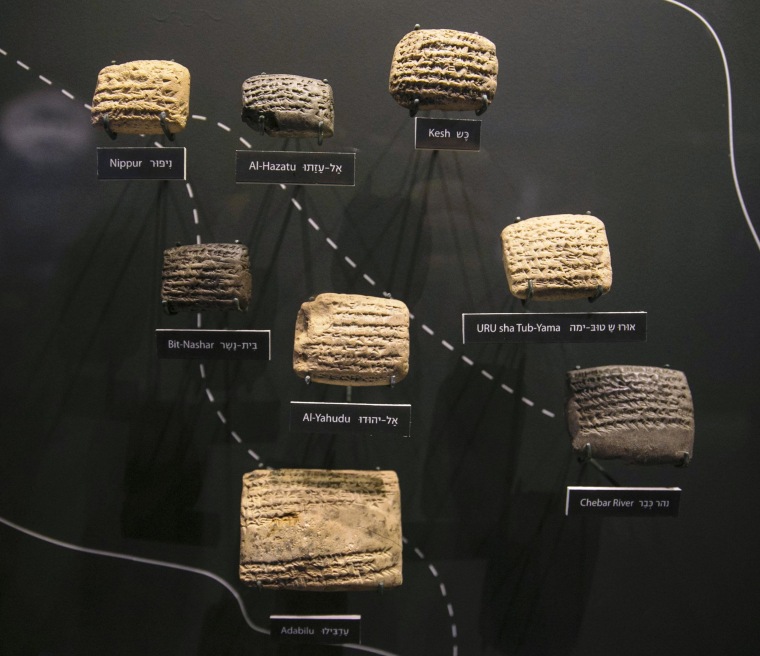JERUSALEM — A new exhibition of ancient clay tablets discovered in modern-day Iraq is shedding light for the first time on the daily life of Jews exiled to Babylon 2,500 years ago. The exhibition is based on more than 100 cuneiform tablets, each no bigger than an adult's palm, that detail transactions and contracts between Judeans driven from, or convinced to move from, Jerusalem by King Nebuchadnezzar around 600 B.C.
Archaeologists got their first chance to see the tablets — acquired by a London-based Israeli collector — barely two years ago. They were blown away.
"It was like hitting the jackpot," said Filip Vukosavovic, an expert in ancient Babylonia, Sumeria and Assyria who curated the exhibition at Jerusalem's Bible Lands Museum. "We started reading the tablets and within minutes we were absolutely stunned. It fills in a critical gap in understanding of what was going on in the life of Judeans in Babylonia more than 2,500 years ago."
Nebuchadnezzar came to Jerusalem several times as he sought to spread the reach of his kingdom. Each time he came — and one visit coincided with the destruction of Jerusalem's first temple in 586 B.C. — he either forced or encouraged the exile of thousands of Judeans. One exile in 587 B.C. saw around 1,500 people make the perilous journey to the fertile crescent of southern Iraq, where the Judeans traded, ran businesses and helped administer the kingdom.
"They were free to go about their lives, they weren't slaves," Vukosavovic said. "Nebuchadnezzar wasn't a brutal ruler in that respect. He knew he needed the Judeans to help revive the struggling Babylonian economy." The tablets, each inscribed in minute Akkadian script, detail trade in fruits and other commodities, taxes paid, debts owed and credits accumulated.
IN-DEPTH
- Babylonian Tale of Round Ark Draws Christian Ire
- Ancient Texts Tell Tales of War ... and Bar Tabs
- Genetic Map Paints Complex Picture of Jewish Exiles
